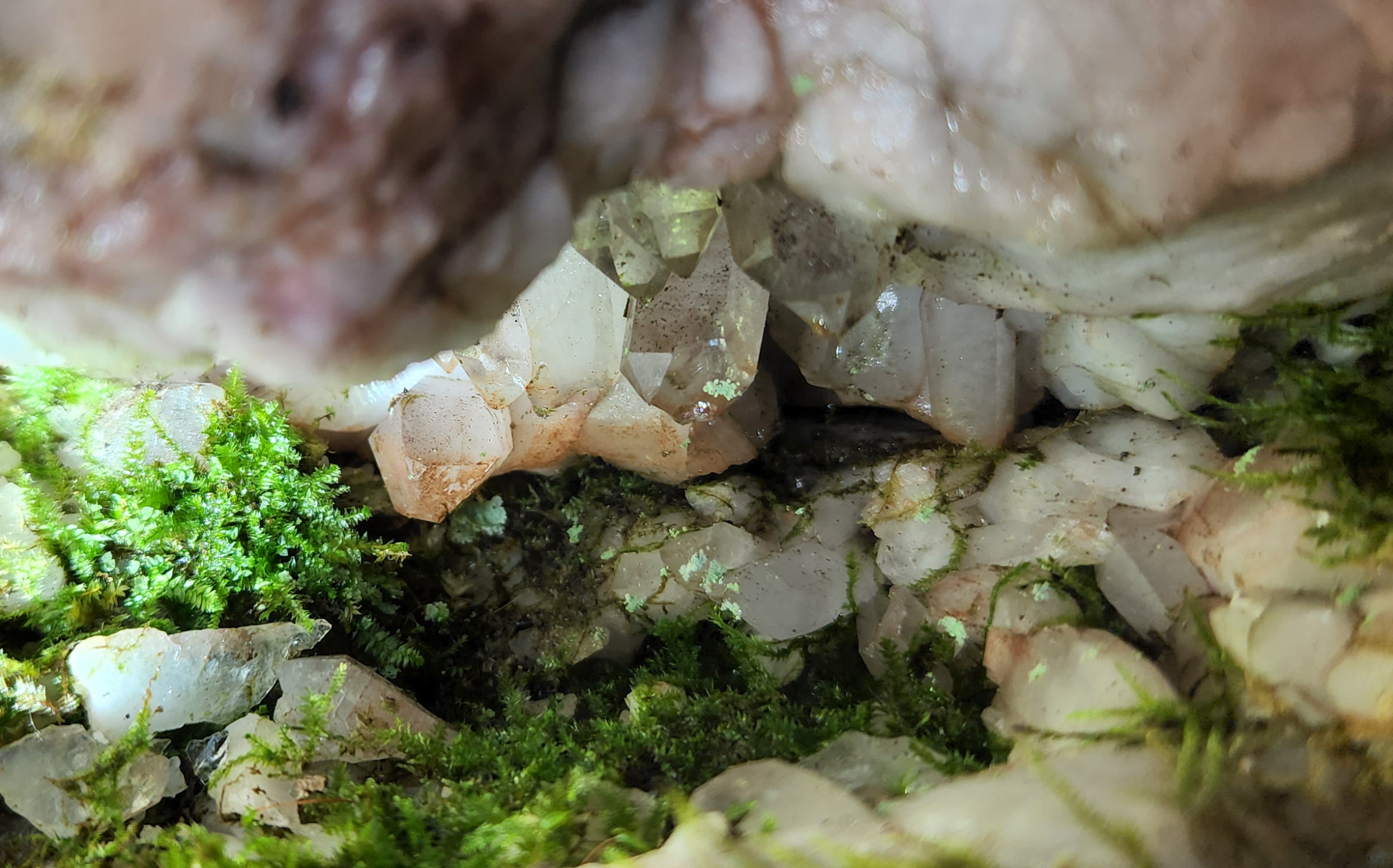The Stunning Quartz Crystals of Goose Lake
Pockets of beautiful quartz points at Goose Lake, Photo Credit: Cody Wiedenbein
Did you know that you can find fantastic quartz crystals in Michigan?
Quartz crystals— big ones at least— are not common in Michigan, but they can be found in at least one place: Goose Lake, near Marquette. But I’m not going to tell you where to find them exactly and it’s for your own safety. You could follow the Mindat location, but Mindat will send you to the center of Goose Lake.
Please don’t try diving to the bottom of the lake to find them, the location is off by several miles and you’ll risk drowning for nothing. Mindat locations are often wrong, frankly. The location is legal to access, but if we did make the exact location public, deaths would be on our hands. The roads are impassable, you must hike off trail through blackberry brambles taller than you that tear at your skin while avoiding unexpected cliffs and slopes that will send you tumbling to certain injury. We can’t have that on our conscience and that’s why the MI Rockhounds team won’t give you the exact location unless trails in the area are improved in the coming years. Sorry.
Cody and I were brought to this amazing location by Shawn Carlson, one of Michigan’s most remarkable geologists: former diamond exploration geologist from the Canadian arctic, uranium exploration geologist, mineralogist discoverer of more than 40 minerals in Michigan and the man who identified Erik Rintamaki’s “Yooperlite” as fluorescent sodalite and wrote the paper on it, the author of the 3rd edition of the Mineralogy of Michigan that he made freely available through the Seaman Mineral Museum website because he believes everyone should have ready access to every piece of knowledge. And my old friend from 20 years ago who scared me sh*tless by taking me to the most terrifyingly dangerous locations I could only dream up in my most fevered nightmares. That Shawn Carlson, to whom we are deeply indebted for an amazing day of collecting.
Venturing through the better-groomed trails of Goose Lake in search of quartz, Photo Credit: Cody Wiedenbein
Goose Lake has an exposure of Kona dolomite, one of the stranger and more beautiful rock formations in the whole of North America- it’s actually quite near the Lindberg quarry just south of Marquette, where rockhounds are welcome to collect modest amounts of Kona dolomite from the piles as long as they are safe and considerate. And in this area near Goose Lake, there is an abundance of quartzite and quartz veins and some of these veins have pockets… and within those pockets are little caverns of beautiful crystalline quartz.
Crystals have been extracted from those pockets since the 1960’s, though the exact location was lost for decades as the Ishpeming rock club members grew older and forgot where they had once found them. Quartz crystals more than a foot in length have been found, but during our latest visit nothing more than an inch or two was collected. But what those crystals lacked in size, they more than made up for in beauty.
Extracting quartz from Goose Lake, Photo Credit: Cody Wiedenbein
You may note that some are perfectly transparent and some are milky, those are all beautiful. But there are more varieties than this. Some exhibit twinning, with crystals growing out of others at unusual angles. But wait, there’s more! Observe the coloring (there’s a gallery at the bottom of the page): hematite, an iron ore mineral, can be found nearby. Some quartz is stained orange by the iron. Some are coated with a fine layer of purplish hematite, giving it an almost amethyst look. Others appear to be covered with speckles of dirt, but look closely: those dots are not on the surface, but inside. Some appear black and are hematite again while some are dark green and fibrous: chlorite.
It was near the end of our visit that Shawn pointed out something I’d never heard of at all: a curved quartz crystal.
Curved quartz crystal, Photo Credit: Craig McClarren
I honestly had never heard of curved quartz crystals— I’m familiar with changes of angle and such, but to have it bow shaped… that was odd. We discussed whether it could be caused by deformation of the rocks, but on closer inspection we can see that only a single crystal was bent and not any others in the specimen. So it can’t be caused by stress or deformation since none of the neighboring crystals were affected, but by a flaw in the crystal lattice of the quartz itself. Incredibly fascinating to a rock nerd like me! Only a few minutes later, I found a fragment of a much larger crystal that had been blown up by explosives decades ago showing the exact same curvature.
These spectacular pieces are on privately owned lands that are kept freely open to the public for tax write-off reasons and thus it’s perfectly legal to collect there. Unfortunately, without obtaining permission from the corporate owner, it is impossible to improve access to the location. We also strongly suspect that there are more than just the several pockets of quartz that we know of- there are probably dozens or hundreds even, but to do a proper study would require permission from the corporation that owns the land… something unlikely to happen. But I do hope that one day soon, access improves and we can share the location with you. Shawn used to bring elderly rock club members out there. Now it’s too hazardous to even return himself, he says. But hopefully one day, old trails will be cleared and we will be able to share this amazing place with all of you!























